Gardening can be a relaxing and satisfying hobby for seniors. Patty Cassidy, author of The Illustrated Practical Guide to Gardening for Seniors, tells how to begin.
Gardening is rated as one of the top 10 leisure activities for folks 50 and older. Whether you’ve been gardening since you were a child or just decided to take it up upon retiring, gardening can improve your health and help you form strong and lasting bonds with your natural environment. It gets you outdoors soaking up Vitamin D for bone strength, improves hand-eye coordination, offers problem solving exercises, and provides a feeling of purpose, accomplishment, and general well-being.
No matter what your skill level, however, you need to consider certain things before you start investing too much time and resources in your garden endeavor. What size garden is reasonable? Do you want to plant flowers, vegetables, or both? How does your body feel? What tools do you need? What does the soil need? Gardening should provide you with a sense of personal satisfaction and fulfillment, so it’s important to set yourself and your garden space up for success, not frustration.
Personal Preferences
Perhaps the first thing to ask is what kind of gardener you want to be. Some gardeners enjoy spending a lot of time tending their plants. Often their gardens are filled with lush annual and perennial flowerbeds and have many productive rows of vegetables and herbs. Of course, these “high maintenance” gardens require daily oversight such as irrigation, weed and pest control, thinning, deadheading, and harvesting, but they also give the gardener a great sense of satisfaction.
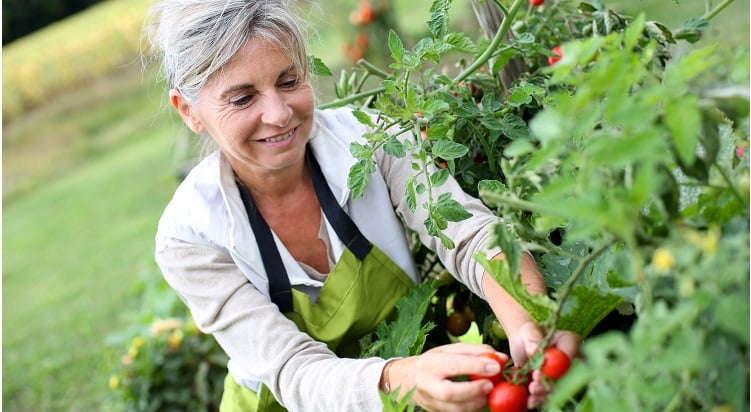 Others, who have interests beyond the garden wall, prefer “low maintenance” spaces. For example, maintaining a single bed for cut flowers, tending to one patio tomato in a pot, or enjoying a container overflowing with flowering plants may satisfy the gardening urge while still leaving time for other interests. After all, grandchildren need nurturing too.
Others, who have interests beyond the garden wall, prefer “low maintenance” spaces. For example, maintaining a single bed for cut flowers, tending to one patio tomato in a pot, or enjoying a container overflowing with flowering plants may satisfy the gardening urge while still leaving time for other interests. After all, grandchildren need nurturing too.
Physical Readiness
Next, take a realistic stock of your physical capabilities. While stages in the normal aging process may be gradual, it’s likely that decreases of strength, stamina, balance, vision, and possibly some cognitive function, may begin to challenge your abilities.
It’s wise to take an assessment of how your body is feeling and functioning before heading into the garden. Gardening is a form of moderate exercise that requires mobility for moving, including bending, reaching, kneeling, and being flexible. Because your body is your most important tool in the garden, it’s vital to know how to protect and keep it safe so it endures for many seasons. Know and respect your body’s limitations so that when you make decisions about what and where to plant, and you’ll experience more success and less frustration.
Safety First
The importance of taking some basic precautions in the garden cannot be overstated. Tripping over a hose, falling on wet pavers, or getting scratched by overgrown rose bushes can put a halt to your activities in the garden and even elsewhere. With the start of a new season, do a safety assessment of your space. Make sure garden paths are clear of overgrowth, slippery moss, and hoses. Keep edges defined and visible. Make sure the water supply is easy to access and activate. Wear a tool apron or belt to keep your tools close and safely stored. Mark the handles of pruners, shears, trowels and other tools with bright colors so they can be seen readily and don’t provide an opportunity for tripping.
Adaptations
Being honest about your physical abilities will help you prevent mishaps and encourage you to consider new ways to adapt your garden routines and tools to meet your needs. Simple exercises to increase physical stamina and strength may you help you gain skills and feel secure. Check out resources or consult with your health care provider.
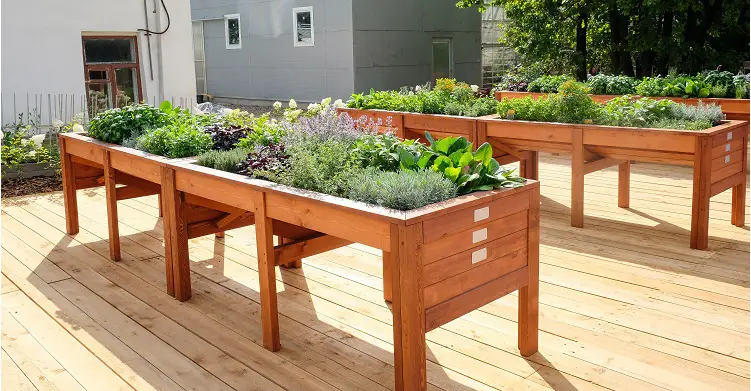
Consider news ways of doing a task. For example, if kneeling is no longer an option for you, sitting on a plastic chair or heavy plastic milk carton can give you stability and access to the garden bed. Another option is using an inverted kneeler-seat for the weeding and deadheading chores. Install a raised bed with a sitting rail that will give you a comfortable place to garden safely and will provide easy access to the soil and plants. A raised bed will also give you more control and ease of soil quality, light exposure, and pest management.
Arthritis is a common condition that develops with age and can interfere with flexibility and strength, especially in the hands. Adding padded handgrips to your favorite pruning shears (e.g., with foam pipe insulation) is a quick, efficient, and economical adaptation that will enable you to stay engaged in your garden tasks.
Tools of the Trade
Whether you are a veteran gardener or one just starting out, you should have these few essential tools available and in good working order. When purchasing new tools such as rakes, shovels, or welders, buy lightweight options that allow for easy carrying and storing.
- Gloves are a very basic tool and their fit is important to prevent blistering, getting poked with sharp twigs, and being bitten by bugs and spiders. Good-fitting gloves also prevent infections by keeping dirt and bacteria from getting into cuts on your fingers and hands.
- Hand pruners are essential in keeping plants shapely and healthy, but it’s important to your own health that you get the right kind. Decide about the type of material you will be pruning and invest time to find a pruner that feels comfortable in your hands.
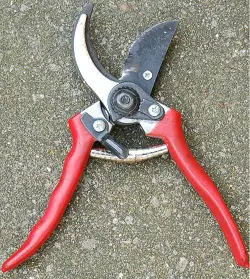
The three styles of pruners are designed to handle the different type of stems—from soft flower material to woody stems.
Bypass pruners, similar in design to what a scissor cut does, are designed to cut supple, green wood.
Anvil pruners are best used for dry branches or old wood. These are not recommended for cutting soft green stems.
Ratchet pruners are versatile and good for people who lack strength in their hands. The cutting action happens in stages, making it easier to cut through larger branches.
- Hand trowels are ideal for loosening up the soil, planting small flowers or vegetables, and even weeding. To ease pressure on wrist joints, look for trowels with sharp tips that come with ergonomically padded handles.
- Rakes with telescoping handles provide you with two tools in one. At the extended length you can stand up as you rake up debris and leaves. Collapsing the handle gives you a hand rake that can be used in hard-to-reach spots such as under a shrub or around a delicate perennial — a perfect tool in a raised bed.
- Shovels (“floral shovels”) have rounded edges that allow you to cut through sod but also can scoop mulch and soil. Be careful to choose the lightest-weight shovel so you avoid spending energy carrying a heavy tool.
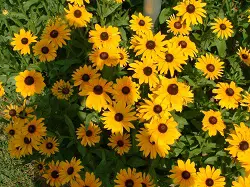
Low-maintenance options
Choices will vary depending on your growing climate, but the following basic concepts apply to most gardens.:
- Choose plants that don’t need staking since the process of propping up plants can be arduous and challenging for aging gardeners.
- Choose ground covers such a creeping thyme or pachysandra that are easy to maintain and provide a barrier to weeds.
- Save energy in the long run by choosing perennials: they need only one planting and return year after year. Black-eyed Susan is a hearty, cheerful, and low-care flowering plant. Echinacea is also an easy flowering plant and its seed heads attract birds.
- Easy and tasty herbs to grow include lavender, chives, rosemary, and sage — to name just a few. Most herbs are drought-tolerant so require little maintenance.
Indoor Gardening
When outdoor gardening becomes difficult, creating gardens indoors can improve your quality of life and provide a boost your emotional well-being. You’ll need to assess the light levels in your home, however, since many houseplants need correct sun or artificial light to thrive. Here a few basic suggestions:
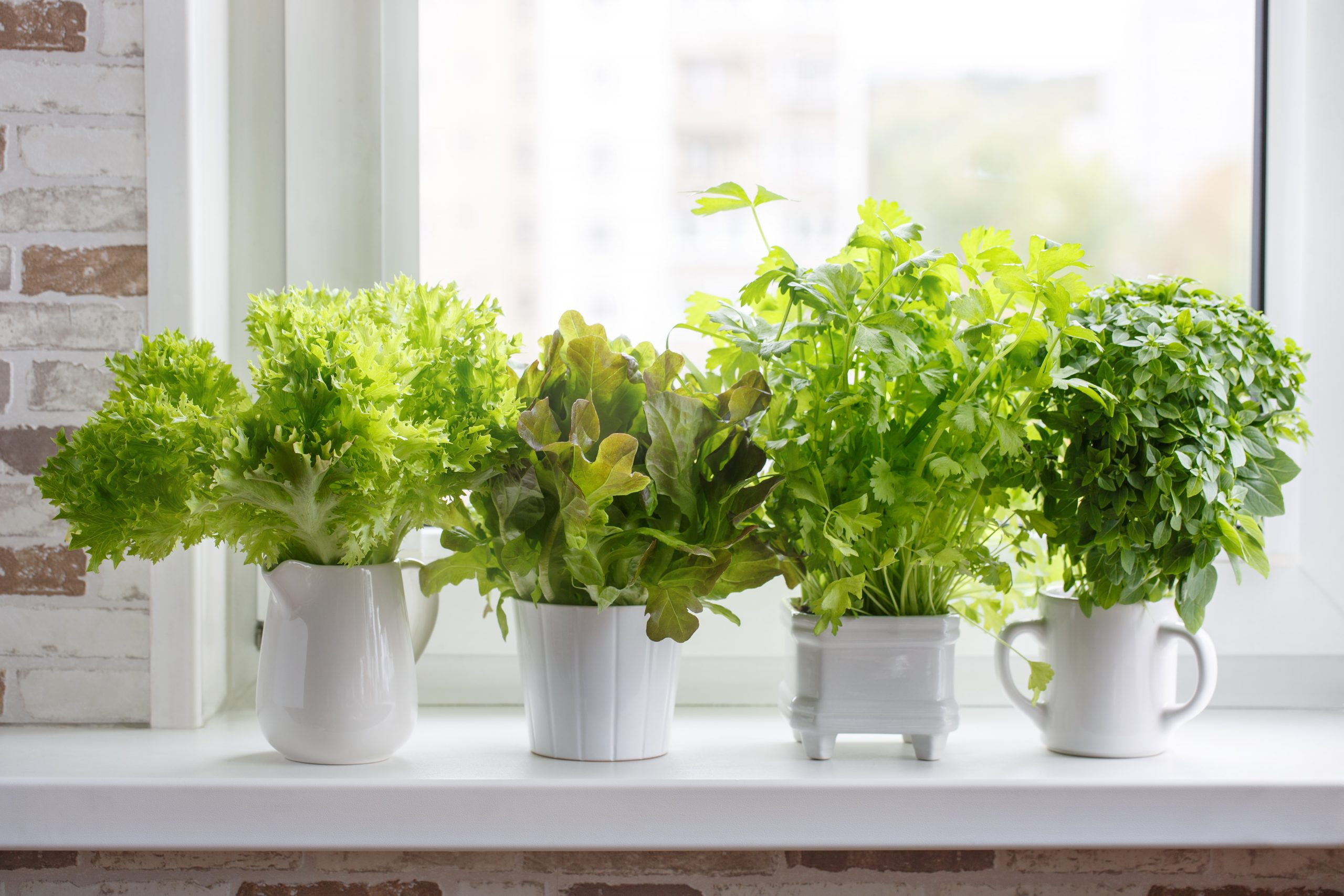
- Herbs (basil, parsley, rosemary) require full-sun.
- Begonias and ivies can thrive in partial light.
- Philodendrons, peace lilies, and Chinese evergreens need low light, low heat, and little water.
Finding a good book on houseplants will assist you in your indoor garden ventures.
Indoor or out, the joy from feeling successful as a gardener as you age cannot be overstated. While the products you harvest are tangible, how you feel about the process is what keeps you feeling productive, in tune with the natural world, and young at heart.

Recent Comments